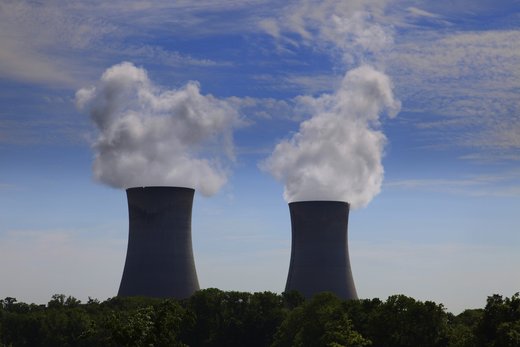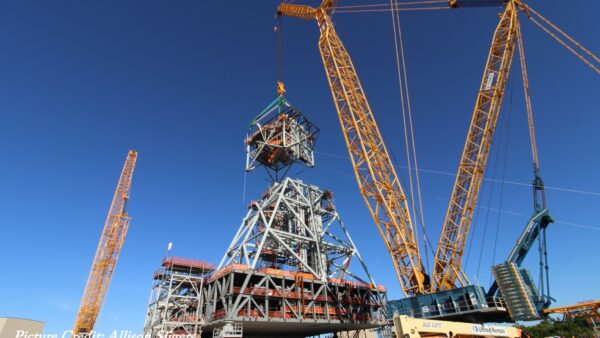9 October 2013
At the start of this month the American engineering giant Chicago Bridge & Iron Company (CB&I) announced a joint venture that would seem the stuff of legend for many.
It had teamed up with China Power Investment Corporation (CPI) to build nuclear power plants – in China.
CPI is one of just three state-owned nuclear power companies in a country that is way out ahead of the global pack with its ambitious nuclear new-build program.
In the tally of nuclear projects under construction around the world, China tops the list with 28 while Russia comes a distant second with nine, according to the International Atomic Energy Agency (IAEA).
India and South Korea have seven and five under construction, respectively, while the US trails with three.
The IAEA says 66 nuclear reactors are currently under construction globally which, if true, means that just over 42% of all nuclear new build in the world is happening right now in China.
CB&I’s link-up with CPI – to provide engineering, procurement, construction management, commissioning, project management and technical support for new power plants – is certainly good news.
The company said in a statement that it expects China to approve 30 more new plants by 2020.
Not only does the JV give it access to a vast new market, it also provides timely escape from a home nuclear scene that is starting to look like a cartoon character suspended in mid-air – legs a-blur – just before it notices the cliff edge some way behind it.
That’s because in America, the global leader in nuclear power to date with around 100 nuclear power stations, the so-called “nuclear renaissance” vaunted since the early 2000s has slammed into reverse.
High-consequence event
In the first part of the last decade the conditions for a revival in American nuclear new-build fell neatly into place.
For the previous 20 years there had been no orders for new reactors, but concerns over rising energy costs, US dependency on foreign oil, and tackling carbon emissions made the case for nuclear popular again.
By early 2009, there were 31 applications for new reactors pending at the U.S. Nuclear Regulatory Commission (NRC).
Writing in the September 2007 bulletin of the IAEA, Jone-Lin Wang and Christopher Hansen of Cambridge Energy Research Associates cautiously acknowledged the “nuclear renaissance” but warned that a major accident or incident of terrorism anywhere in the world would “put the brakes” on it.
This they characterised as “a low-probability but high-consequence event”.
A better description could hardly be found for the Fukushima Daiichi nuclear disaster of March 2011, which “put the brakes” on nuclear plans all over the world, and raised the costs of new-build as lessons learned were fed back into developing designs and upgrades.
The rapid expansion of shale gas extraction dealt another blow to nuclear as domestic energy prices plummeted.
“It is all in ruins now,” summed up Vermont Law School’s Peter Bradford in this year’s World Nuclear Industry Status Report, published by European anti-nuclear groups.

Limerick Nuclear Power Plant, Pennsylvania, US (Peteburke73/Wikimedia)
Capex wildcards
This year the US nuclear industry reeled from the surprise early retirements of four power stations – the first shutdowns in 15 years.
In three cases the units faced costly repairs, but one case was purely economic: the Kewaunee plant in Wisconsin was running fine and had recently received a renewed licence to operate for 60 more years.
For Mark Cooper, another senior analyst at Vermont Law School, the writing on the wall is unmistakable.
In a July report entitled Renaissance in Reverse, he identified a further 38 stations exposed to a crossfire of risks including competition from low-cost shale gas, rising operating costs, and the blank-cheque bills associated with repairs and ‘uprates’ – the upgrading of plants to extend life or to achieve higher performance.
Uprates, said Mr. Cooper, were ‘capex wildcards’ of the same order as new-builds, meaning they were prone to vast time and cost overruns – as much as 80% in one case cited (Monticello).
He calculated that, of nearly three dozen uprates approved by the NRC since 2009, over half have been abandoned, cancelled or put on hold, while half of those proceeding have suffered major cost overruns.
Meanwhile, of the three nuclear projects under construction in the US, two can be traced back to the “renaissance”.
They are Georgia’s Vogtle Electric Generating Plant, units 3 and 4, and South Carolina’s Virgil C. Summer Nuclear Station, units 2 and 3 (four reactors in all).
The Vogtle project has been hit by delays and cost escalations, for which proponents have blamed protesters.
Construction started for each in March 2013, and building each is Chicago Bridge & Iron Company (CB&I).
(The third “under construction” is Tennessee’s Watts Bar-2 project, which actually started in 1972, and failed to meet its latest start-up date of 2012.)
As things look now it’s hard to envisage any more nuclear new-builds starting any time soon.
“Nuclear reactors are simply not competitive,” Mark Cooper writes. “They have never been competitive at the beginning of their life cycle, when the build/cancel decision is made, and they are not competitive at the end of their life cycles, when the repair/retire decision is made.”
He concludes: “Policy efforts to resist fundamental economic reality of nuclear power will be costly, ineffective and counterproductive.”
Clearly, China would disagree, which is why CB&I is celebrating its JV with CPI.
“This new commitment with CPI will reinforce CB&I’s leadership position building next-generation nuclear power plants around the world,” said Philip K. Asherman, CB&I’s president and CEO.
He might have added: “except America”.






